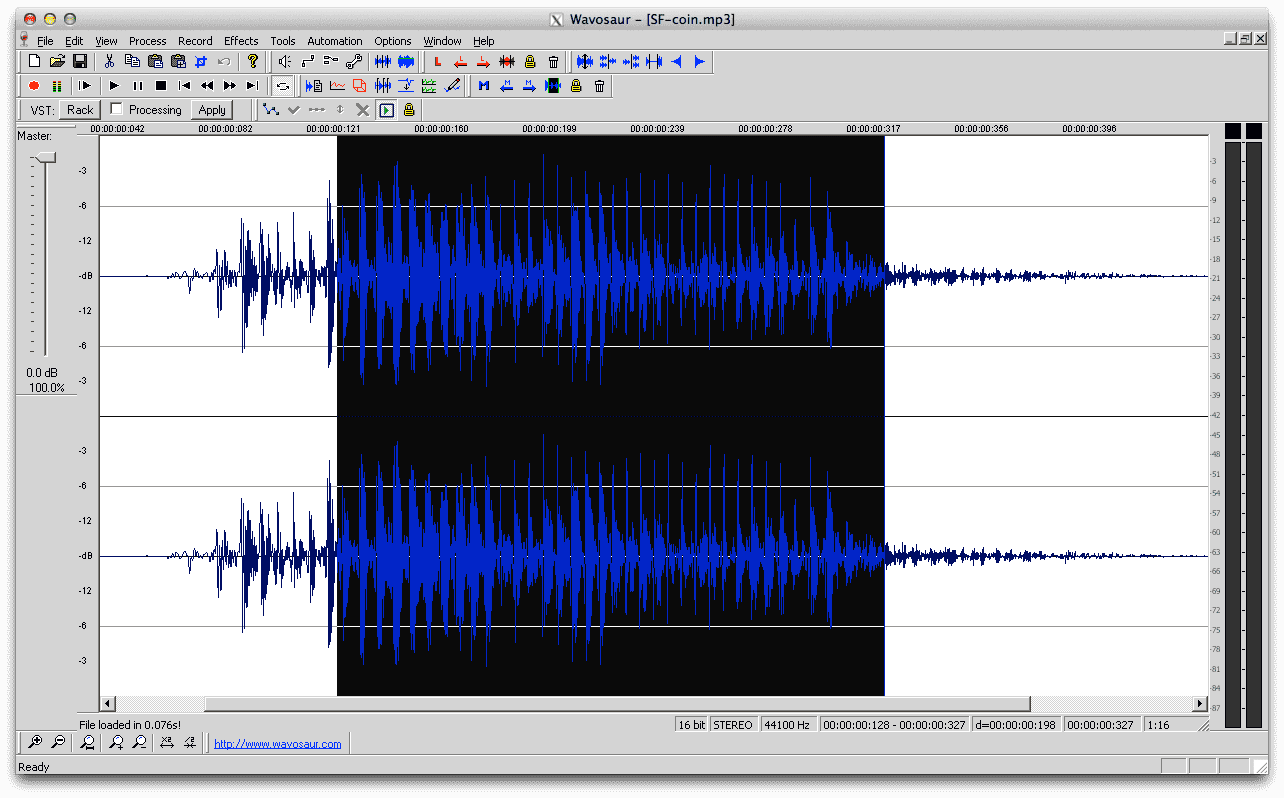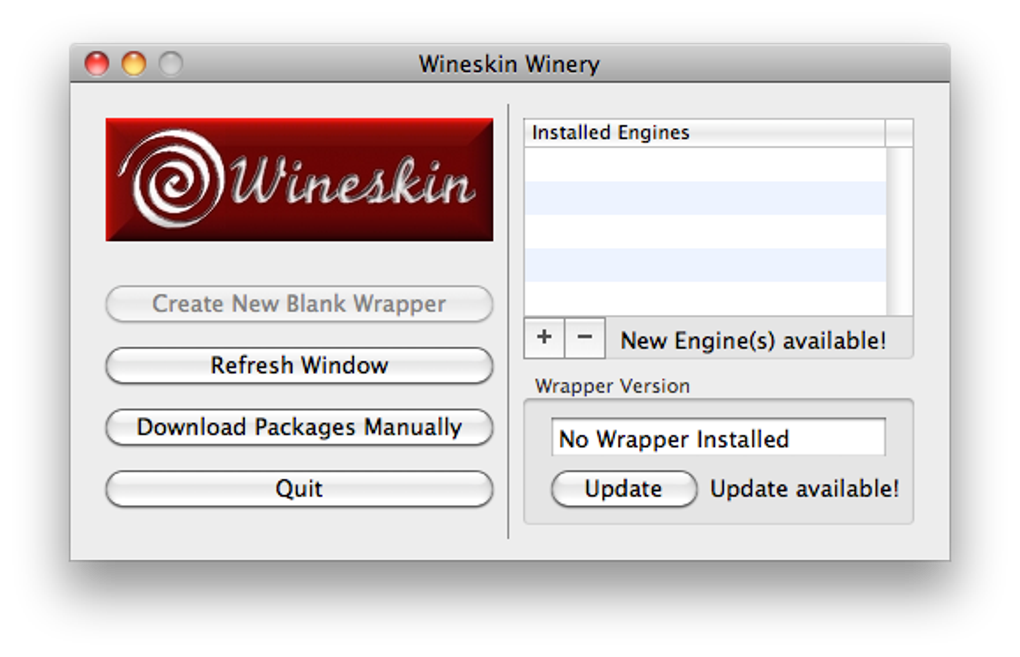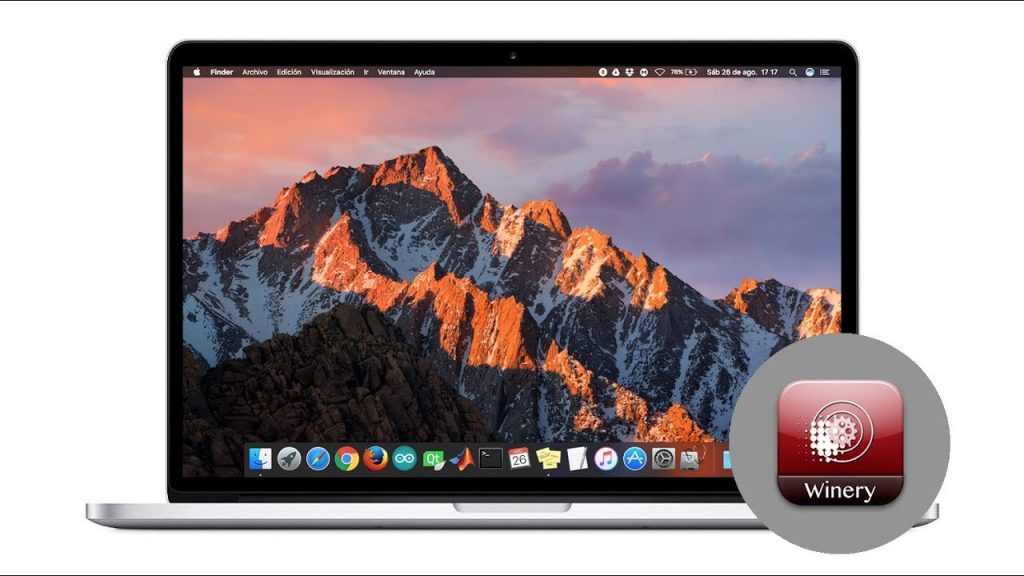
Nov 28, 2020 Wineskin Winery is a porting tool to make Windows programs/games into Mac OS X apps. GUI building, made for ease of use and customization. Make Mac OS X ports/wrappers for Windows software Integrated Wine (upgradable/downgradable) Integrated X11 (Xquartz) Included installer, and easy configuration options Includes usable Winetricks as well. To download Wineskin Winery, visit their website - http://wineskin.urgesoftware.com/tiki-index.php?page=Downloads. Wineskin Winery is a third party application that provides additional functionality to OS X system and enjoys a popularity among Mac users. However, instead of installing it by dragging its icon to the Application folder, uninstalling Wineskin Winery may need you to do more than a simple drag-and-drop to the Trash. Wineskin is a tool used to make ports of Windows software to Mac OS X. The ports are in the form of normal Mac application bundle wrappers. It works like a wrapper around the Windows software, and you can share just the wrappers if you choose. Wineskin Engines are Wine, meaning if Wine doesn’t work on on macOS Catalina, only CrossOver19 when launched will function on macOS Catalina and I don’t plan on building that on day one.
Note: I know this is an old thread, and am just posting to help anyone else who stumbles upon this thread.
Download Wineskin Winery 2.6.0 For Mac
First of all: Wine (just plain wine) is NOT available for Mac, so that leave you with Wineskin, WineBottler, PlayOnMac, or CrossOver.
Wineskin and WineBottler are intended for creating wrappers, which is basically converting it to a Mac application.
Wineskin gives you more customization over your wrapper.
WineBottler also comes with a system that lets you just run any exe on mac just like that.
PlayOnMac lets you download and run supported apps easily, but isn't good for just any exe.
CrossOver is paid software.
If all you want to do is run exes with right-click>Open With, than install WineBottler.
Nov 24, 2015 9:19 PM
Translations of this page:Français (Translators, please see Discussion page.)

Installing WineHQ packages
Official WineHQ packages of the development and stable branches are available for macOS 10.8 to 10.14 (Wine won't work on macOS Catalina 10.15). Please test these packages and report any bugs at http://bugs.winehq.org.


Prerequisites:
- XQuartz >= 2.7.7
- Gatekeeper must not be set to block unsigned packages.
Installing:
Both .pkg files and tarball archives are available at https://dl.winehq.org/wine-builds/macosx/download.html.
Installing from a .pkg file is recommended for inexperienced users.
To install from a .pkg file, double-click on the package, and the usual macOS installer wizard should open. The process should be self-explanatory. It is possible to install the package either for all users (needs administrator privileges), or just for your current user. After the installation is finished, you should find an entry 'Wine Staging' or 'Wine Devel' in your Launchpad. By clicking on it, a new Terminal window opens with a short introduction into some important wine commands. You can now directly start wine/winecfg/... from the Terminal, as the PATH variable is set correctly. For user convenience, the package also associates itself with all *.exe files, which means you can run windows executables just by double-clicking on them.
To install from a tarball archive, simply unpack it into any directory. There is no need to set DYLD_* environment variables; all paths are relative, so it should work as long as the directory structure is preserved (you can skip the /usr prefix though using --strip-components 1).
For more information, see https://www.winehq.org/pipermail/wine-devel/2015-December/110990.html and https://www.winehq.org/pipermail/wine-devel/2016-January/111010.html.
Installing Winehq packages using homebrew
Winehq packages can be installed using homebrew

XQuartz can be installed using;
To install wine the following command can be used;
wine-stable, wine-devel or wine-staging packages can be installed using the above example.The advantage of installing via homebrew means wine is available from a standard terminal sessionThe --no-quarantine line to used to above brew adding the quarantine bit
Building Wine
See Building Wine on macOS
Uninstalling Wine
- Remove the source tree and binaries.
Using Homebrew:
Using MacPorts, uninstall the wine package you previously installed:
Replace wine with wine-devel if you installed the development version.
Otherwise and if you used `sudo make install`, revert it:
Then simply delete your local Wine source code directory:
- Clean-up pseudo C: drive and registry entries as well as all programs installed to C:
- Check the hidden directory `$HOME/.local/` where Wine stores some desktop menu entries and icon files as it interoperates with the X.Org Foundation and the Free Desktop.
Note: Files in this directory are unused on macOS unless you use a UNIX window manager and other X11 applications instead of the native MacOS apps.
Third Party Versions
Third party versions of Wine, such as Wineskin, Winebottler, and PlayOnMac, are not supported by WineHQ. If you are using one of those products, please retest in plain Wine before filing bugs, submitting AppDB test reports, or asking for help on the forum or in IRC.